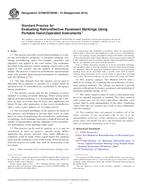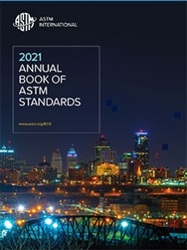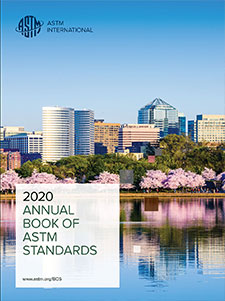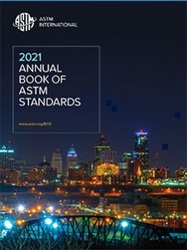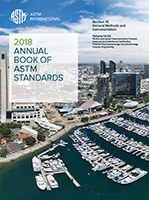Description
1.1”This practice describes several field techniques to evaluate the retroreflective properties of pavement markings containing retroreflecting optics (for example, centerlines and edgelines) and applied to the road surface. The techniques described in this practice contain sampling criteria such as the length of test sections and the number of measurements needed. The practice is based on retroreflective measurements made with portable hand-operated instruments in compliance with Test Method E1710.
1.2 The data obtained from this practice can be used to determine the acceptance or rejection of a project based on specified levels of retroreflectivity established by the agency having jurisdiction.
1.3”This practice can be used for the evaluation of newly installed or existing pavement markings. When testing newly applied pavement markings, it is recommended that the evaluation be done no sooner than 48”’h after application but before 30 days after application so that excess retroreflective optics, such as glass spheres, are no longer present.
1.4”The assessment techniques in this practice are based on best practices and designed to provide three levels of confidence in terms of quantifying the retroreflective performance of markings. Each technique represents a tradeoff between the number of measurements and the confidence of the retroreflective performance of the markings under study.
1.5”This practice can be used by agencies as is or may be customized to meet an agency”’s specific needs. Where applicable, the practice describes areas where different assumptions could be made, which would impact the sampling needs and the confidence levels of the results. When deviations from this practice are made, they shall be documented in the test report.
NOTE 1:
”
When measuring newly installed pavement markings, there are several factors that contribute to erroneous values for measurements made within a short time after application, such as excess retroreflective optics, top coatings on tape, incomplete curing of the binder, and coatings on the retroreflective optics. Retroreflective measurements taken within 48”’h after application may be useful to quickly gauge the application quality but are not intended to be used with this practice.
NOTE 2:
”
When measuring existing or in-service pavement markings, care should be taken so that representative sections of pavement markings are measured. There are particular conditions where excessive pavement marking wear can be associated with a specific cause such as vehicle tracking along horizontal curves, access points to gravel pits, and high weave areas. Pavement markings can also collect dirt, grime, and debris.
1.6”This practice replaces Specification D6359 with a multi-level strategy for evaluating the retroreflectance of pavement marking materials. This change was desired to provide agencies with options for project acceptance and monitoring of pavement markings during service.
1.7”The values stated in either SI units or inch-pound units are to be regarded separately as standard. The values stated in each system may not be exact equivalents; therefore, each system shall be used independently of the other. Combining values from the two systems may result in nonconformance with the standard.
1.8”This standard does not purport to address all of the safety concerns, if any, associated with its use. It is the responsibility of the user of this standard to establish appropriate safety, health, and environmental practices and determine the applicability of regulatory limitations prior to use.
1.9”This international standard was developed in accordance with internationally recognized principles on standardization established in the Decision on Principles for the Development of International Standards, Guides and Recommendations issued by the World Trade Organization Technical Barriers to Trade (TBT) Committee.
Product Details
- Published:
- 05/01/2022
- Number of Pages:
- 6
- File Size:
- 1 file , 120 KB

